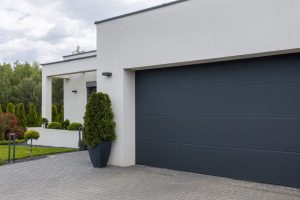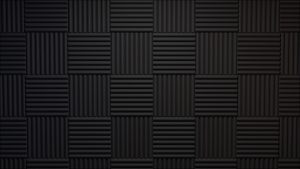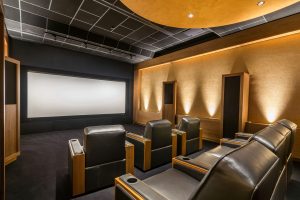Do I Need Soundproofing For My Podcast?
There are a lot of great podcasts out there these days. It’s so easy to set up home studios, and many people are converting their spare rooms and free time into platforms for discussing all the things that they’re passionate about. If you’ve decided to start a podcast of your own, you may be wondering whether you need soundproofing to make it sound like a professional production.
Soundproofing for podcast studios delivers a lot of benefits. Whether you’re trying to keep outside noises out or inside noises in, soundproofing your studio will give you much greater control over the sound in your room. Let’s look at some of the reasons soundproofing for podcasters is so important.
Reasons for Soundproofing Your Podcast Studio
Building a podcast studio is a great time in one’s life. Setting up the recording equipment and laying out the room where you’ll create your masterpiece can be very exciting. It can also be a little overwhelming, making sure you’ve taken care of everything you need. Whether you’re entering the initial design phase for your studio, or are thinking of revamping your current space, make sure you don’t ignore the most important element of all—the sound.
Soundproofing Prevents Noise Passage
Soundproofing for podcast studios is an essential part of creating a quality show. Since your end product is essentially an audio track, you’ve got to make sure it contains only the sounds you want it to.
If you live close to a busy street or bustling playground, you’ve got potential additions to your audio track that are completely out of your control. The one thing we can control, however, is how well our walls block those noises. Utilizing professional soundproofing materials is the best way to block those outside noises and gain better control over the sound of the space.
The same goes for if the noise production comes from inside your studio. If you record lively discussions when your family members are trying to sleep in the next room, soundproofing the space will allow them to sleep soundly while you and your guests do your thing.
Poor Acoustics Cause Other Problems
You want your voice to come across clearly in the end product, but you also want it to have a great tone. If your space is inadequate for recording, it will be hard to get that great sound you’re after. The biggest problems we run into in untreated studios are echo and reverb.
If the room has problems with reverb, podcasts will definitely suffer. The amount of reverb you experience depends upon the size of the room and the properties of the surfaces. If your walls and floors are too reflective, you’ll likely hear an echo in the track. If your walls are too absorptive, the room will sound dead. Finding a balance will give you the sound you want.
Your Equipment Will Notice, Even if You Don’t
If you’re recording with a good microphone, it will pick up those reflections, and they can be hard to remove in post. A microphone dampener can help eliminate some problem noises, but if your room is acoustically poor, a full room treatment for home audio recording is best.
At the end of the day, it’s much easier to acoustically treat your studio to prevent any problems than it is to try to fix problems in post.
Basic Soundproofing for Podcast Studios
Soundproofing for podcast booths follows the same acoustic principles as when you’re soundproofing any other space. The main issues we deal with are echo, reverberation, and sound transmission across walls, doors, and windows. Here are the basic tools we use to combat them.
Soundproofing Materials
When we want to reduce the amount of sound that passes from one space to the next, we use soundproofing materials. Soundproofing materials are materials that add mass to surfaces, seal gaps and cracks, damp vibrations, and decouple surfaces. They are essential in keeping outside noises from making their way into the room and in keeping sounds created inside from creeping out. The level of soundproofing you require will depend on the location of your studio, as well as the thickness and density of your walls and doors.
Sound Absorbing Materials
One of the most important things you can do to make your podcast sound great is to cut down on audio reflections. Sound absorbing materials are soft and porous, and most importantly, dense. When sound waves strike them, they get absorbed into the material rather than bouncing back across the room.
By introducing sound absorbing materials into the room, you can break up the large, reflective surfaces in the room and eliminate reverberation and echo, two things that can give your podcast issues.
Sound Diffusers
Diffusers work differently from sound absorbing materials, but they are equally important in an acoustical treatment plan. Sound diffusers work by creating numerous different surfaces and angles, meaning the sound waves that impact them get scattered around the room, rather than reflected directly back at the source. Scattering sound waves like this makes echo and reverb far less prevalent because the reflected waves are more likely to be absorbed somewhere along the way.
Proper Soundproofing for Podcast Booths
If you’ve decided to take measures to make your podcast sound as great as you want it to, you’ll need to do a few key things with those materials. Now that you understand the types of materials used in soundproofing for podcast studios, let’s look at how to apply those materials. Here’s how to soundproof a room for podcasting.
Increase Mass in the Walls and Doors
If the room you’re using for your podcast deals with outside noise, you’ll have to add some mass to the walls and doors to reduce or eliminate the problem sounds. Thin walls and doors allow a lot of sound to pass through them.
Simply adding mass won’t cut it. You need to add significant density. Even if they have decent mass, walls that aren’t dense enough can’t absorb enough vibrational energy caused by the sound waves to stop it.
Rolling mass loaded vinyl (MLV) out onto your surfaces is a great way to increase both mass and density to your existing walls. If you want to take it a step further, add a second layer of drywall on top of that MLV. Add in a heavier door, and you’ve taken some simple steps to significantly reduce the amount of sound passage you experience in your studio.
Seal any Gaps or Cracks
If the walls in your studio have any gaps or cracks, they will leak sound, no matter how much mass you’ve added to the walls. Pay particular attention to the space around windows and doors, as these are known weak spots.
For some gaps and cracks, you’ll use gap filler and caulk. This is an ideal solution for gaps that aren’t part of a moving object. For the spaces around doors and windows, you’ll want to use door seal kits and window inserts.
Door seal kits automatically seal up the spaces around the door, the moment it is closed. They are a cost effective way to stop sound from escaping through one of the main weak spots in your studio’s sound defenses.
Make Sure your Windows are Well Sealed
Windows can also let a lot of sound pass in and out of rooms if they aren’t sealed well. Whether they’re old, single paned windows, or they have gaps around the edges, upgrading those old, weathered windows will pull a lot of weight when you’re soundproofing for podcast rooms.
If you’ve got old, drafty windows that need to be replaced, going with double or triple glazed replacements will provide superior soundproofing. If you aren’t in the market for a new set of windows right now, try using window inserts. They’ll provide your older windows with an additional pane of glass and a gap that will boost their soundproofing abilities. They are available in standard and custom sizes, meaning they are a great solution for any window.
Add Acoustical Treatments
The easiest rooms to soundproof are the ones that aren’t overly loud to begin with. The louder your room, the more measures you’ll have to take to keep those sounds contained. That being said, acoustically treating your podcast studio will ensure that you aren’t contending with a loud, reflective room.
Fabric Wrapped Acoustical Panels
A fantastic way to soften the sounds in your podcast studio is to add fabric wrapped acoustical panels to the walls. But don’t forget to pay particularly close attention to your acoustic panel layout. Placing them at head level and in line with the sources of most sounds will allow them to absorb a good deal of the audio frequencies you are putting out and prevent them from bouncing around the room.
Drop an Area Rug on Your Floor
Another large surface that has a tendency to reflect sound waves is your hardwood or tile floor, if you’ve got one. Placing a large area rug in the room will reduce the reflectiveness, and will keep impact sounds down from footsteps and other movements.
DIY Soundproofing for Podcast
It’s not uncommon for podcasters to look for DIY solutions to soundproofing for podcast studios. There are some simple, cheap materials that will help absorb some sound waves and take a little of the echo and reverb out of your track, but for a professional sounding podcast, using professional materials is a must.
Luckily, many of these professional products can easily be installed by anyone with some simple tools and the desire to create a great studio. The fact that you can get much of this done without paying for labor means you can get pro sound at a DIY price.
Do Podcast Booths Need Soundproofing?
While it’s not absolutely necessary to completely soundproof your studio, acoustically treating and soundproofing a podcast studio will make your voice sound clearer, reduce unwanted noise in the mix, and will give the sound a warmth that will keep people coming back.
Soundproofing for podcast studios is a real game changer. If you need help setting up your acoustic treatment diagram, contact the pros at Acoustic Geometry for guidance to create a soundproof podcast studio that gives your homegrown show a pro finish.


















Leave a reply
You must be logged in to post a comment.